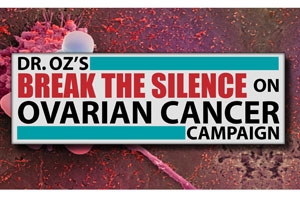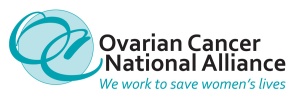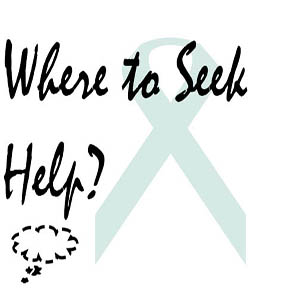We regret to inform you that the ipl2 is ceasing operations on June 30, 2015. The Ask an ipl2 Librarian service will close on June 24, 2015 to allow us time to answer every last question. The ipl2 site (http://ipl2.org/) will remain up but unmaintained for an unspecified period of time after June 30. We sincerely thank all our loyal patrons for 20 years of support and enthusiasm.
In the News: Shop Smart, Shop Safe
November 20, 2013 — theipl2bloghttp://www.flickr.com/photos/ari/4145273010/
With the holidays approaching many people are starting their shopping. Next week comes one of the busiest shopping days of the year: Black Friday. Plus pre-Thanksgiving sales, Cyber Monday, and all the other holiday sales make this time of year a little hectic when it comes to finding the perfect gift. With some of the economic challenges people are facing this year, finding the best bang for the buck is even more important. So take a break and check out the history behind Black Friday and some tips and tricks you can use to find the best deals and to keep yourself safe as you shop for your loved ones this year.
NEW! Why is it called Black Friday?
http://useconomy.about.com/od/demand/f/Black_Friday_Name.htm
Black Friday got its name originally because of the car accidents and violence that took place as the crowds rushed for the sales. Stores didn’t want the day associated with something so negative so they changed it to represent the way the sales would help get them back in the “black” financially speaking.
The History of Black Friday (find it on the ipl2)
http://blackfriday.com/pages/black-friday-history
Find out more about Black Friday on this site devoted to the day and everything surrounding it. Learn more about when it started, who coined the phrase, and why it’s become something shoppers look forward to almost as much as Thanksgiving or Christmas.
Personal Safety Plan for Black Friday (find it on the ipl2)
http://www.ncpc.org/about/news/you-need-a-personal-safety-plan-for-black-friday
The National Crime Prevention Center offers tips to keep you safe if you go out to face the crowds on Black Friday. These ideas will help you make a plan ahead of time and keep you, your money, and others around you safe. Remembering to take your time, not carry more than you can, and being aware of your surroundings are just a few of the tips offered to make your shopping more enjoyable and less stressful.
Black Friday Ads and Shopping (find it on the ipl2)
This site gathers all the sales and information you need to make your strategy for Black Friday shopping. Browse the ads ahead of time, find out special shopping times, and learn any restrictions you need to know before you head out the door.
Tips: Safe Online Shopping (find it on the ipl2)
http://www.safeshopping.org/tips.shtml
Because of the crowds and the craziness you might prefer to shop from the comfort of your home. This site offers practical advice and tips on how to protect yourself as you shop. Valuable suggestions on how to tell if a website is secure to shop on and reminders to trust your instincts are just a couple of the tips that can help you have a safe and enjoyable shopping experience, even on the web.
Cyber Monday Ads and Shopping NEW!
With the advent of online shopping, stores decided to get in on the shopping frenzy of Black Friday and extend special deals that would be available only online on the Monday after Thanksgiving. This site will give you tips on all of the deals to watch for on Cyber Monday. Plus they offer the inside scoop on online deals all throughout the year.
Better Business Bureau Consumer Tips (find it on the ipl2)
http://www.bbb.org/us/consumers/
The Better Business Bureau offers plenty of tips on how to shop online safely. They offer suggestions on how to avoid scams, lists of reliable sites, and ratings on specific businesses to help you make better choices. There are a lot of useful links and articles to help you stay safe while shopping all year long.
NEW! Shopping Tips and Tricks
http://shoppingtipsandtricks.com/
This blog is updated regularly and is focused on helping you find the best deals. There are regular pages of links to places you can find coupons or ads, information about freebies, and other sites you might find useful. Plus, the author posts about special promotions as she finds them.
National Retail Federation (find it on the ipl2)
http://www.nrf.com/modules.php?name=News&id=615
This site gives you all the news you could want about past and present shopping trends around the holiday season. Get statistics, articles, and information about Black Friday and Cyber Monday. It will help you check out what’s big this year or look at what happened last year at this time.
In the News: World Pneumonia Day
November 13, 2013 — theipl2blogWorld Pneumonia Day is held on November 12 every year to bring attention to the world’s leading killer of children under age 5, and to encourage governmental action to prevent and treat the disease around the globe. Key messages of World Pneumonia Day 2013 include: Pneumonia takes an immense human toll; the Developing World is the worst affected; Proven interventions exist and must be made available to the vulnerable; and Innovation is crucial. Pneumonia is an infection of the lungs that can be caused by a variety of factors, including bacteria, viruses, parasites, fungi and chemical and physical irritants. Pneumonia is most common in Winter months and anyone can get it, although it most often attacks young children, people over the age of 65, and those with compromised respiratory or immune systems. Preventative strategies and treatments are available and several organizations are involved in implementing and tracking those interventions all over the world.
Pneumonia Fast Facts
Virtual Medical Centre: Pneumonia NEW!
http://www.virtualmedicalcentre.com/diseases/pneumonia/38#Statistics
The Virtual Medical Centre provides a Pneumonia Fact Sheet with definitions, statistics, risk factors, treatments, research resources and more.
Pneumonia & Children
World Pneumonia Day NEW!
The United Nations has recognized November 12th as World Pneumonia Day since 2009. This year the theme for Pneumonia Day commemorations is “Innovation”. On November 12th, medical professionals and advocates call upon the governments of the world to invest in innovation for the prevention and treatment of the world’s number one killer of young children.
World Pneumonia Day Places Emphasis on the Biggest Killer of Children (find on ipl2)
http://www.unicefusa.org/news/news-from-the-field/world-pneumonia-day-unicef.html
“We can’t have the reductions in child mortality that we envisage without a concentrated, direct attack on the biggest enemy that children face,” said Mickey Chopra, Chief of Health of United Nations Children’s Fund in November, 2012.
Pneumonia & the Elderly
Pneumonia – University of Maryland NEW!
http://umm.edu/health/medical/reports/articles/pneumonia
For the elderly population in the United States, Pneumonia is a serious concern. It is the most common hospital-acquired infection for seniors, and is one of the most prevalent nursing home-acquired illnesses. The University of Maryland provides excellent information on the causes, diagnosis, treatment and prevention of the disease in the elderly and other populations. Images and charts make this medical information easier to understand.
What are the Risks of Pneumonia in the Elderly? (find on ipl2)
http://www.wisegeek.com/what-are-the-risks-of-pneumonia-in-the-elderly.htm
The elderly are vulnerable to Pneumonia because they often have weakened immune systems and pre-existing health conditions that are worsened by Pneumonia. Common treatments are often not effective for older patients for a variety of reasons. Wisegeek discusses some of the challenges involving older patients and Pneumonia.
Symptoms & Treatment
Pneumonia – MedlinePlus (find on ipl2)
http://www.nlm.nih.gov/medlineplus/pneumonia.html
High fever, shaking chills, unproductive cough, shortness of breath– all are possible symptoms of Pneumonia. MedlinePlus, an excellent online health resource, provides plenty of information on the symptoms and treatment of Pneumonia, which is also called Bronchopneumonia.
Pneumonia – Treatment & Drugs (find on ipl2)
http://www.mayoclinic.com/health/pneumonia/DS00135/DSECTION=treatments-and-drugs
Antibiotics, anti-viral medications and vaccinations for children are possible responsive or preventative treatments for Pneumonia. As explained by the Mayo Clinic, treatment for Pneumonia depends largely on its type and severity.
Around the World
World Health Organization – Pneumonia (find on the ipl2)
http://www.who.int/mediacentre/factsheets/fs331/en/
Pneumonia affects people all across the globe, but it is most prevalent in South Asia and sub-Saharan Africa. The World Health Organization fact sheets provide information about the specific causes of Pneumonia and discusses how to prevent and treat the disease with simple remedies and care.
Pneumonia – The Acute Respiratory Infections Atlas NEW!
http://www.ariatlas.org/understanding_aris/pneumonia
The Acute Respiratory Infections Atlas, sponsored by the World Lung Foundation (WLF), provides maps and other information about Pneumonia around the world. Pneumonia, according the WLF, is a disease of poverty.
In the United States
American Lung Association (find on the ipl2)
http://www.lung.org/lung-disease/influenza/in-depth-resources/pneumonia-fact-sheet.html
The American Lung Association discusses the causes, types, treatments and costs of Pneumonia in the United States. It also provides statistics about Pneumonia in the U.S. regarding age, gender and race.
Centers for Disease Control and Prevention (CDC) (find on ipl2)
http://www.cdc.gov/features/pneumonia/
The CDC, a participant and advocacy organization in World Pneumonia Day, reports that “In 2009, 1.1 million people in the United States were hospitalized with pneumonia and more than 50,000 people died from the disease.” The CDC also provides other information as well, including facts on the prevention of the disease through vaccination and good hygiene practices.
Strategies & Progress
What We Do – Pneumonia Strategy Overview – Bill & Melinda Gates Foundation (find on the ipl2)
http://www.gatesfoundation.org/What-We-Do/Global-Health/Pneumonia
The Bill & Melinda Gates Foundation is participating in efforts to prevent and treat Pneumonia around the world. The foundation’s “top priority is to promote full-scale delivery of currently available…vaccines and support the development of new vaccines” and to improve access to treatments for those at risk.
Pneumonia Progress Report – IVAC NEW!
The International Vaccine Access Center from the Johns Hopkins School of Public Health provides data about the progress the world is making in preventing and treating Pneumonia in the 15 countries with the most child Pneumonia Deaths. Their findings? “Even in the face of significant progress, pneumonia remains the biggest threat to children’s lives, and disproportionately affects the poorest children in the world.”
In the news: 2013 – The Year of Solar Flare
November 7, 2013 — theipl2blog
The sun erupted with an X1.7 class solar flare on May 12th, 2013. This is a blend of two images of the flare from NASA’s Solar Dynamics Observatory. One image shows the light in the 171-angstrom wavelength and the other show the 131 angstroms.
Are science fiction literature authors correct when they write about solar flares causing Earth’s communications to fail and causing catastrophes worldwide or is this simply a convenient plot device? The year 2013 has seen the most solar flares since 2003 because the Sun’s magnetic field cycle is reversing polarization, as it does every 11 years. This reversal causes larger and more frequent solar flares, which explains why this year has seen a large number of these impressive solar weather occurrences in many years. National Aeronautics and Space Administration (NASA) officials say “the sun’s normal 11-year activity cycle is ramping up toward solar maximum, which is expected in late 2013” (NASA News, 2013, found below).
Early in October the Earth was treated to a wonderful display of Northern Lights, illuminating the sky with brilliant dancing colors throughout the Northern United States and Canada. A solar flare directed at the Earth sent a larger than average stream of magnetized radiation at the Earth, which reacted with the Earth’s own gravity and magnetic field, creating Northern Lights. This particular flare was a class M, which was not strong enough to disrupt any satellites or space stations orbiting the Earth but is still considered impressive by NASA’s standards.
The question remains: how will these solar flares affect technology and are they dangerous to the Earth? Below are some informative links explaining what solar flares are, how they affect technology, and how they are studied.
What are solar flares and why are they important:
Solar Flare Theory Educational Web Pages (find it on the ipl2)
http://hesperia.gsfc.nasa.gov/sftheory/index.htm
NASA’s Goddard Space Flight Center in the Heliophysics Science Division offers a detailed look at solar flares, explaining what a solar flare is, why it’s important to study solar flares, and what impact solar flares have. Additionally, this site reviews current research projects in the field of solar flares, such as the RHESSI Spacecraft.
NASA News (find it on the ipl2)
http://www.nasa.gov/mission_pages/sunearth/news/News060813-m5.9flare_prt.htm
On June 8th, 2013, NASA announced that a class M solar flare had occurred on June 7th. NASA explained effects such as moderate radio blackout are common with class M solar flares. NASA officials also stated that increased solar weather activities, like flares, were likely to occur more frequently in 2013, as the magnetic field was likely to reach “solar maximum.” The United States Space Weather Prediction Center with the National Oceanic Atmospheric Association predicts that the solar flare activities are likely to increase late in 2013.
The Sun Also Flips: 11-Year Solar Cycle Wimpy, but Peaking (New!)
http://www.news.wisc.edu/22222
University of Wisconsin-Madison’s Terry Devitt provides an in depth explanation of the solar flare and of solar maxes, explaining that the Sun’s magnetic field reverses direction every 11 years, causing sunspots, solar flares, auroras, and geomagnetic storms. Devitt also discusses the effects of superflares and their potential global threat to the Earth.
The not-so Northern Lights: Solar Flare Slams into Earth to Display Majestic Aurora as Far South as Kansas, Maine and Donegal (New!)
http://www.dailymail.co.uk/sciencetech/article-2442531/Solar-flare-causes-Northern-Lights-US-Kansas-Maine-Donegal.html#ixzz2iNzp8EQf
The Daily Mail Online explains how a powerful solar flare brought the Northern Lights as far south as Kansas, Main, and Donegal (a town in Ireland). The site explains the phenomena and includes many lovely photos from Paul Cyr illustrating an Amish family experiencing the Lights for the first time. The Daily explains what a solar flare is, why it occurs, and that in December of 2013 this solar flare cycle will reach its peak, undoubtedly creating more Northern Lights.
How do they affect technology on the Earth:
The Effects of Solar Flares on Technology (New!)
http://www.ehow.com/list_7584091_effects-solar-flares-technology.html
eHow explains the Effects of Solar Flares on Technology in a manner that is clear and easy to understand. eHow explains the Sun’s 11 year magnetic energy cycle and its effect on the rate of solar flare as it changes. The site additionally outlines the effect on the power grids, GPS technology, and mobile devices.
Could an Extremely Powerful Solar Flare Destroy all the Electronics on Earth? (find it on the ipl2)
http://science.howstuffworks.com/solar-flare-electronics.htm
In Jonathan Strickland’s article with HowStuffWorks.com, he explains the nature of the sun, solar flares, and the potential for damage for our planet when a solar flare happens. Strickland explains that the majority of flares are absorbed in our atmosphere, creating Northern Lights and leaving the majority of people unharmed, but for people in space or at high altitudes skin cancer or irritation is a risk depending of the flare’s classification; additionally Strickland explains the vulnerability of satellites and electronics. The last super-storm from the Sun happened in 1859, when a flare so powerful occurred that Cubans saw the Northern Light. Strickland explains that if a similar flare happened today, it would take months to repair the damage.
Solar Flare Warning Issued by NASA (New!)
http://www.inquisitr.com/914975/solar-flare-warning-issued-by-nasa/
On August 21st NASA issued a Solar Flare Warning as a storm hurtled toward the Earth at 3 million mph, interrupting some satellites used for GPSs and airline communications. The article from Inquisitor explains that 3 million mph is an average speed for solar storms. Additionally the Northern Lights is an extraordinary side effect of the these storms. When the solar radiation from the the flare hits the Earth’s magnetic field, the radiation breaks up in the atmosphere creating the Northern Lights in the sky, which are brightest at the poles of the Earth where the magnetic field is the strongest.
Solar Effects (find it on the ipl2)
http://www.swpc.noaa.gov/info/SolarEffects.html
The National Oceanic Atmospheric Association (NOAA) Space Weather Predictions Centers (SWPC) offers detailed descriptions of solar effects, including solar cycles, solar-terrestrial effects (the solar weather’s effects on earth), and a look at SWPC’s other solar weather operations. The table provided on this site is particularly helpful in laying out the specific effects that solar weather has on the Earth.
How do we study the sun:
Scientists have High Hopes for Japan’s Solar-B Mission Which has been Launched from the Uchinoura Space Port (find it on the ipl2)
http://news.bbc.co.uk/2/hi/science/nature/5371162.stm
Here the BBC’s Jonathan Amos discusses Japan’s new mission to study solar explosions. In September of 2006, Japan sent the spacecraft Solar-B into space carrying a probe, which will find out more about the Sun’s magnetic fields that cause solar flares when their 11-year cycle changes, flinging radiation into space. Amos explains that the probe will act as magnet to study the sun, giving scientists the hope that with finer detail they will be able to predict solar flares more accurate and avoid disaster in the future.
The Classification of X-ray Solar Flares or “Solar Flare Alphabet Soup” (find it on the ipl2)
http://spaceweather.com/glossary/flareclasses.html
SpaceWeather.com gives a unique look into the science of classifying solar flares. By analyzing strength of wattage, or the measurement of light admitted from the Sun, in a measurement called an Angstrom, scientists are able to determine the classifications; for example 10^-5.5 watts measures up to a class M solar event. The site then explains how class X could lead to lasting radio blackout and radiation, class M would cause radiation in the Earth’s magnetic field and radio blackouts around the pole, and class C are unnoticed by the public.
Strongest Solar Flare in Months Unleashed by Sun (find it on the ipl2)
http://www.nbcnews.com/science/strongest-solar-flare-months-unleashed-sun-8C11369482
NBC’s Denise Chow offers a clear explanation of the class system for solar flares in a report of the event on October 9th, 2013, when at 9:48pm EDT one of the strongest solar flare in two months occurred. Chow illustrates the role of Earth’s magnetic field and how the flare could disrupt communications on Earth.
Our Sun (New!)
http://www.kidsastronomy.com/our_sun.htm
This children’s site illustrates the fundamentals of solar astronomy, highlighting key points like x-ray classification of solar flares, convection, thermonuclear fusion, and sun spots and winds. This site is particularly helpful because it offers HD video from NASA and the Kids Know It Network.
NASA Canyon of Fire on the Sun (find it on the ipl2)
http://www.nasa.gov/content/goddard/nasa-releases-movie-of-suns-canyon-of-fire/#.UmmFvfmsiSo
Nasa’s YouTube Channel offers look at an eruption of solar material that occurred in late September. The video illustrates how the Sun is actually made out of plasma, and as magnetic fields change cycles, eruptions, like solar flares, can happen. This video demonstrates that by analyzing the eruption at different wavelengths, as demonstrated by the multiple colors, scientists are able to study the magnetic field around the Sun.
In the news: It’s that time of year again!
October 23, 2013 — theipl2blogThe leaves are falling, the air is cold and crisp, and it’s time to celebrate ghosts, goblins, witches and everything Halloween. Come visit the ipl2 for some history behind this scary holiday along with traditions and treats to make the most of any Halloween celebration.
Historical and Traditional Halloween
Halloween may be known as a time for costumes and treats, but the holiday did not start out that way. It came about as a Celtic holiday that marked the beginning of a new year by ending the summer crop and beginning the winter crop. On the night of October 31 the Celts celebrated Samhain, which was believed to be when the worlds of the dead and living became fuzzy. Once the dead returned to earth they enjoyed playing tricks by causing damage to crops. In the 1920’s and 1930’s Halloween in America became about “trick or treating,” which stems from the All Souls Day in England where poor people would beg for food and in return for the food, the poor would pray for the families’ dead relatives. Now, kids and adults beg for candy and wear costumes and celebrate by throwing parties. Check out the sites below to read more about traditions and history along with ways to make the most of your Halloween parties.
The history of Halloween and more! (Find it on the ipl2)
http://www.history.com/topics/halloween
The history channel gives a timeline of Halloween from the early days to present. A series of videos explains different aspects of Halloween such as pumpkins, witches, cultures, and the haunted history of the holiday.
The Statistics of Halloween (Find it on the ipl2)
http://www.census.gov/newsroom/releases/archives/facts_for_features_special_editions/012600.html
Contains facts and statistics regarding trick-or-treaters, pumpkins and jack-o’-lanterns, candy, and costumes. Includes relevant place names in the United States, such as Transylvania County, North Carolina, and Tombstone, Arizona.
The Fantasy and Folklore of All Hallows (Find it on the ipl2)
http://www.loc.gov/folklife/halloween.html
An essay about the historical origins of Halloween in the Samhain holiday, “the biggest and most significant holiday of the Celtic year.” Also includes a brief bibliography. From the American Folklife Center of the Library of Congress.
The Halloween Safety game (Find it on the ipl2)
http://www.halloweenmagazine.com/articles.htm
This game is a fun way to learn about Halloween and trick-or-treating safety. The site includes articles about Halloween traditions but also how to stay safe while executing those traditions.
NEW! The Pagan Roots of Halloween
http://www.cbn.com/spirituallife/onlinediscipleship/halloween/halloween_Pagan_Ankerberg.aspx
Want to know more about some Halloween symbols? Take a stroll through some Pagan roots and how these roots relate to this scary holiday on the Christian Broadcasting Network.
NEW! Halloween Traditions
http://www.factmonster.com/spot/halloween2.html
What is a Jack-O-Lantern? Ever hear of Mischief night? Factmonster will provide all the answers to these questions and answers to questions you never thought about for Halloween traditions..
Halloween- Party Time!
It is time for a party. Want to know how to roast pumpkin seeds? How to carve that perfect pumpkin? Or plan the scariest haunted house? Or plan the perfect Halloween meal? Well, you have come to the right place. These sites will help you plan a great Halloween party or small get together and everything in-between. Let’s get the celebration started!
Halloween online (Find it on the ipl2)
http://www.halloween-online.com/
Pumpkins, bats, and spider webs meet and “creep” you at this indispensable Halloween site. It’s been around a long time, since 1994. Everything Halloween in one click—costumes, Halloween parties, pumpkin carving, articles and more. Especially useful are the Halloween decoration tips and Halloween party resources.
PBS Kids (Find it on the ipl2)
Collection of links to Halloween-related activities and content for children, such as a card creator, coloring pages, spooky sounds music maker, games, and write-your-own stories. From PBS Kids.
NBC news (Find it on the ipl2)
http://www.nbcnews.com/business/its-aliiiive-haunted-house-industry-scares-big-money-8C11334306
Want to build your own haunted house? This is a great way to see what others have done and the economics behind the haunted house industry, as told by NBC news. This is no longer a kids holiday with adults now forking over cash to receive a good scare.
Costume idea zone (Find it on the ipl2)
http://www.costumeideazone.com/
Are you the creative type? Do you start planning your Halloween costume in May or June? Then, the Costume Idea Zone is the place for you. Offbeat, unusual and just downright clever ideas will set you on the path to winning a best costume contest on Halloween night.
Better homes and gardens (Find it on the ipl2)
http://www.bhg.com/halloween/recipes/
Scare up some delicious Halloween party food with our easy-to-make Halloween recipes. Make a creepy cupcake or tasty punch. And don’t forget to build your gingerbread-hunted house.
How to build a haunted house (Find it on the ipl2)
http://www.ehow.com/how_4448522_build-haunted-house.html
Time to make the house haunted. Everyone loves a good scare and building your own haunted house can do just that. Ehow gives simple and elaborate ways to build your own haunted house.
Grab your favorite costume. Plan a trick! Take your favorite treat! And come celebrate everything Halloween!
Reminder: You can now subscribe to ipl2’s newsletter and weekly blog posts via email as well as RSS. The “Email Subscription” feature appears prominently in the upper left page on the ipl2′s News and Information WordPress blog. Subscription is free and open to all!
In the News: Back to School 2013
August 8, 2013 — theipl2blog
Goggle Image , used via a Creative Commons License
It’s that time of year again…Time to prepare for going back to school. Families all over the country are beginning to get their children ready to return to school. For some this may mean packing their children up and moving them into their first college dorm, while for others this may mean shopping for back to school clothing and supplies. The resources below provide a look at Back to School Shopping, health, and Common Core and how this is effecting families all over the country.
New resources that will be added to the ipl2 are noted NEW! All other resources are already listed in the ipl2 collections.

image retrieved from kidshealth.org used via a Creative Commons License
Back to School Countdown (find it on the ipl2)
http://kidshealth.org/parent/positive/learning/back_school.html#cat169
This resource provides valuable information about heading back to school. Whether you have a child heading back to an elementary or middle school you can find links to information about how to help your child deal with first day jitters, helping with homework, after school snacks and getting involved at school. There are also many kid friendly links providing a lot of wonderful insights and back to school tips!

Image retrieved from abcnews.com used via a Creative Commons License
5 Ways to Save on Back to School Shopping (find it on the ipl2)
http://abcnews.go.com/Business/BacktoSchool/ways-save-back-school-shopping/story?id=14329474
“School is starting soon, and you know it costs money for children to be prepared with books, clothes, supplies and the just the right backpack.” This resource provides 5 great tips on how to save money when you do your back to school shopping. Read on and SAVE!

Photo retrieved from nbcnews.com used via a Creative Commons License
Tax Breaks for Back to School Shoppers (find it on the ipl2)
http://www.nbcnews.com/video/nightly-news/52672847#52672847
This video resource provides insightful information about the tax breaks being offered to back to school shoppers. “Back to school shopping is the second biggest retail event behind Christmas sales, and a growing number of states are offering a sales-tax break on school supplies as an incentive to spend. NBC’s Rehema Ellis reports.”

Image from education.com used via a Creative Commons License
Back to School Health Check List (find it on the ipl2)
http://www.education.com/magazine/article/Back_to_School_Health/
This site provides information about making a healthy start back to school. This resource covers immunizations, reducing anxiety and special health concerns. Read on to find out what you need to do to help your child start their year off right.
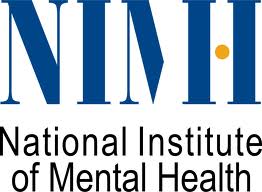
Logo from nimh.nih.gov used via a Creative Commons License
Child and Adolescent Mental Health (find it on the ipl2)
http://www.nimh.nih.gov/health/topics/child-and-adolescent-mental-health/index.shtml
There are many sites that provide resources dedicated to helping your child make a physically healthy start back to school, but this site, the National Institute for Mental Health, is dedicated to the mental health of your child. Read on to learn more about how you can help a child coping with ADHD, Autism, Depression, OCD and the development of a young brain.
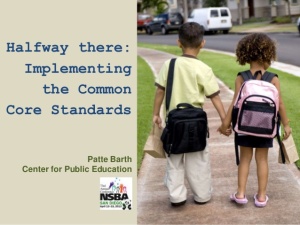
Patte Barth, used via a Creative Commons License
Understanding the Common Core (find it on the ipl2)
http://www.centerforpubliceducation.org/Main-Menu/Policies/Understanding-the-Common-Core
This resource supplies the public with a lot of great information about the Common Core Standards newly implemented by 45 of the 50 United States. There articles both praising and critiquing the Common Core and what this means for a K-12 student about to head back to school.
Reminder: You can now subscribe to ipl2’s newsletter and weekly blog posts via email as well as RSS. The “Email Subscription” feature appears prominently in the upper left page on the ipl2′s News and Information WordPress blog. Subscription is free and open to all!
_________________________________________________________________________________________________________________________________________________
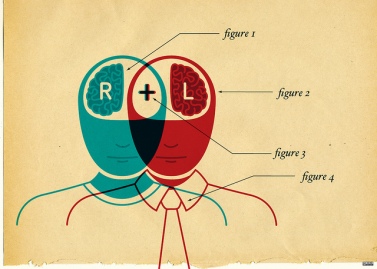

![Pneumonia X-Ray by Encephalon at en.wikipedia [Public domain], from Wikimedia Commons Pneumonia X-Ray by Encephalon at en.wikipedia [Public domain], from Wikimedia Commons](https://theipl.files.wordpress.com/2013/11/pneumonia_x_ray.jpg?w=300&h=233)




